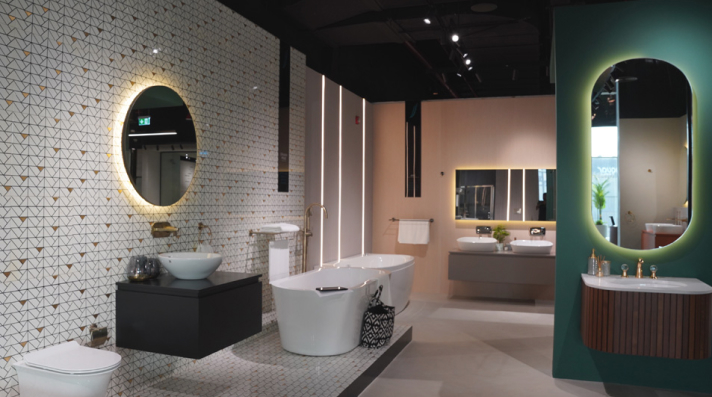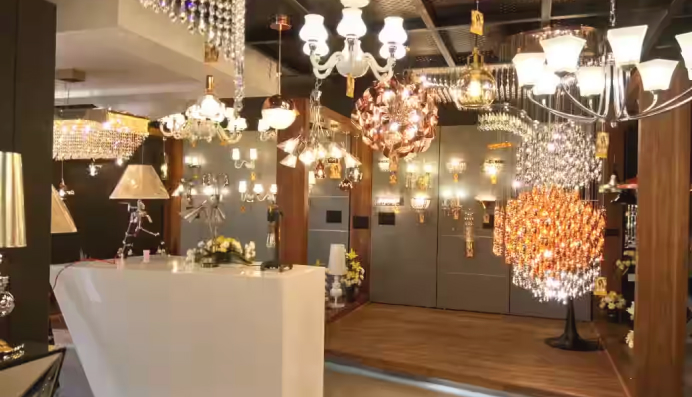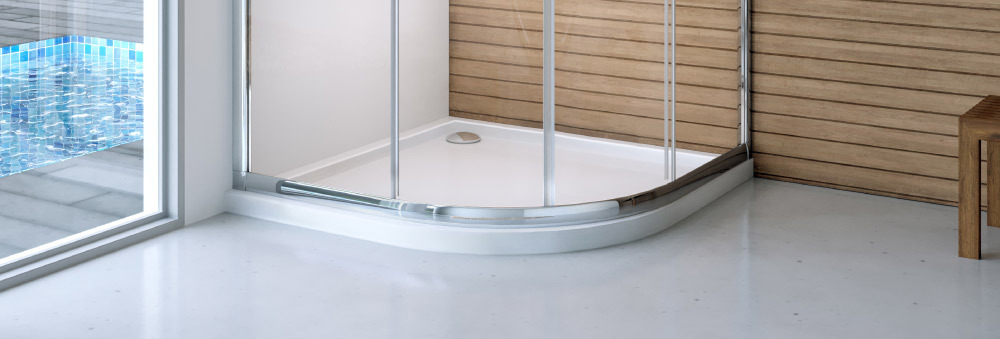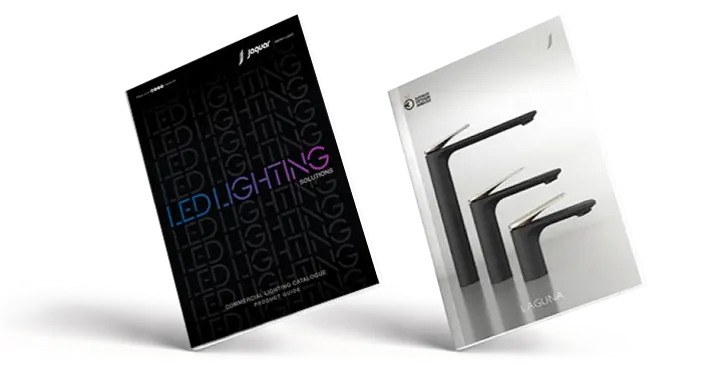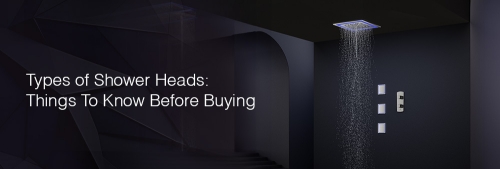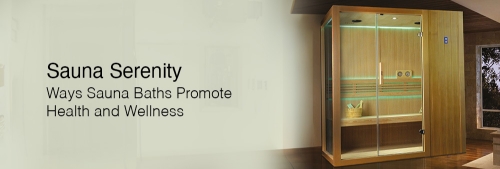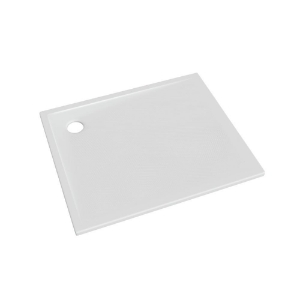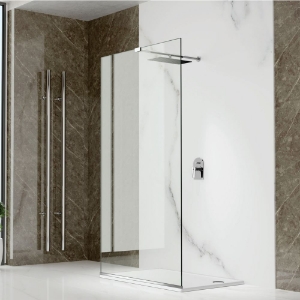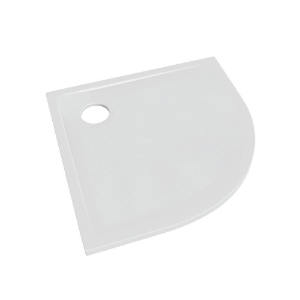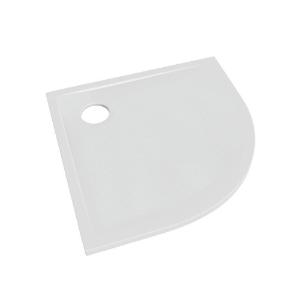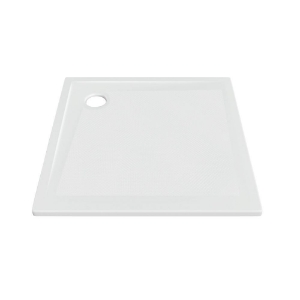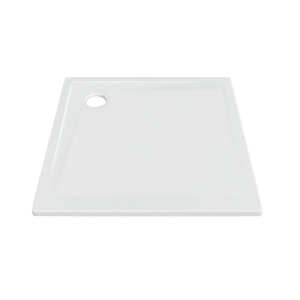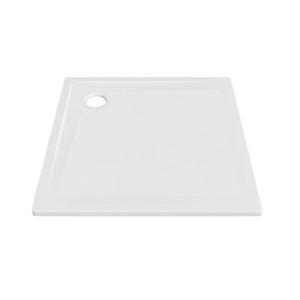Imagine you enter your bathroom for a nice warm shower. The flooding begins, but instead of spilling all over the floor, it runs straight down the drain. Thank God for a shower tray! It’s a tiny but mighty part of the shower that prevents water from making a mess. But what is a shower tray exactly, and why would you have one? Let’s find out!
What is a Shower Tray?
The flat surface at the bottom of a shower that collects water and channels it into the drain is called a shower tray or shower base. This maintains the safety and dryness of the rest of your bathroom. To accommodate various shower enclosures and designs, they are available in a variety of sizes and shapes.
A shower tray is important not only for keeping your bathroom clean, it beautifies the shower as well. Be it a luxurious shower cabin or a basic shower glass partition style, a good shower tray makes it easier to keep things clean & stylish.
Why Do Bathrooms Need Shower Trays?
You might think, “Why not just let the water go straight on the bathroom floor?” While some bathrooms do that, having a shower tray makes things much better. Here’s why:
1. Keeps Water from Spreading
Without a shower tray, water can go everywhere, making the floor slippery and unsafe. Over time, it can also damage your tiles and cause mold to grow. A shower tray keeps water in one place and drains it properly.
2. Makes Cleaning Easier
A bathroom with a shower tray stays drier, which means less mold and dirt. This makes cleaning much easier and helps keep the bathroom fresh and hygienic.
3. Improves the Look of Your Bathroom
A shower tray can make your shower area look neat and stylish. It works well with shower cabins, shower glass partitions, and other modern designs to give your bathroom a sleek look.
Also Read: How Shower Glass Partitions Elevate Your Modern Bathroom Style
4. Helps Water Drain Better
If water stays on the floor too long, it can cause stains and bad smells. A shower tray ensures that water flows quickly into the drain, keeping your shower fresh.
5. Protects Your Bathroom Structure
Too much water can weaken your floor, damage grout, and even make tiles loose. A shower tray helps prevent this, making your bathroom last longer.
Know the details of Jaquar's bath & light range by downloading respective catalogues.
Download Catalogue
Types of Shower Trays
Not all shower trays are the same! There are different types to fit different bathrooms. Here are a few common ones:
1. Low-Profile Shower Trays
These trays sit close to the floor and create a smooth, modern look. They pair well with bath glass partitions to make the bathroom feel more open.
2. Raised Shower Trays
These trays are a bit higher off the ground. They are easier to install and work well with shower enclosures and shower screens to keep water from escaping.
3. Quadrant Shower Trays
These offset quadrant shower trays are curved and fit neatly into corners, making them perfect for small bathrooms with shower cabins.
4. Square and Rectangular Shower Trays
These square shower tray and rectangular shower trays come in standard shapes and sizes, making them a great match for most shower enclosures.
5. Walk-In Shower Trays
These are larger and work well for open showers with shower glass partitions. They create a seamless, modern look.
Also Read: 5 Walk-In Shower Trends & Ideas For Modern Bathrooms
How to Pick the Right Shower Tray
Choosing the best shower tray for your bathroom depends on a few things:
1. Size and Shape
Measure your shower space to make sure the shower tray fits perfectly with your shower enclosures or shower doors.
2. Material Matters
Shower trays come in different materials, each with its pros and cons:
- Acrylic – Light, affordable, and easy to clean.
- Resin Stone – Strong, durable, and stylish.
- Ceramic – Classic look but heavier.
- Natural Stone – Luxury choice with a beautiful finish.
3. Slip Resistance
To stay safe, choose a shower tray with an anti-slip surface, especially if kids or older adults use the shower.
4. Matches Your Shower Setup
Make sure your shower tray works well with your shower enclosures, shower doors, and shower screens to prevent leaks.
Installing and Taking Care of a Shower Tray
Installing a shower tray takes a little planning, but with careful steps, you can ensure it lasts for years. A well-installed shower tray prevents leaks, maintains a clean look, and enhances the overall shower experience. Here’s how to do it right:
Shower Tray Installation Tips:
- Choose the right location: Position the shower tray where it aligns well with your shower enclosures or shower screens to prevent water leakage.
- Make sure the tray is level: An uneven shower tray can cause drainage problems, leading to water pooling in one spot. Use a spirit level to ensure it sits perfectly flat.
- Seal it well to avoid leaks: Apply high-quality waterproof sealant around the edges to keep water from seeping into the floor, which can lead to mold and damage.
- Check the plumbing setup: Before fixing the tray in place, ensure the waste pipe is properly connected and allows water to drain efficiently.
- Secure it properly: Once positioned, fix the shower tray firmly using the recommended adhesives or fixtures to prevent movement over time.
- Let the sealant dry completely: After sealing, wait at least 24 hours before using the shower to allow the sealant to set and ensure there are no leaks.
Also Read: Shower Enclosure Installation Guide To Fit a Bath Enclosure Perfectly
Shower Tray Maintenance Tips:
- Clean regularly with mild soap and water.
- Avoid harsh cleaners that can scratch the surface.
- Check for cracks or leaks and fix them quickly.
- Dry after use to prevent stains.
Modern Shower Tray Trends
Bathroom styles are always changing, and shower trays are keeping up! Some of the latest trends include:
- Slim, modern designs that blend with floor tiles.
- More color options beyond just white.
- Better drainage systems to keep water flowing smoothly.
- Eco-friendly materials for a greener home.
Final Thoughts
Shower trays might seem like a small detail, but they're actually a crucial component of keeping your bathroom safe, clean and stylish. A suitable shower tray will, however, make showering easier and more pleasant, whether you have a tiny shower cabin or a modern shower glass partition.
So, if you are making efforts to upgrade your bathroom, do not neglect the shower tray! It’s a good decision for a superior, safer and more stylish shower area. Happy showering!
Stay updated with Jaquar’s latest collections – connect with us on Instagram!
FAQs:
Q: What materials are commonly used for shower trays?
A: Shower trays are usually made of acrylic, stone resin, ceramic, or fiberglass.
Q: Are anti-slip shower trays necessary?
A: They are not mandatory but highly recommended for safety, especially for kids and elders.
Q: Can shower trays be customized to fit unique bathroom layouts?
A: Yes, many manufacturers offer custom sizes and shapes to fit different spaces.
Q: Can I replace a bathtub with a shower tray?
A: Yes, you can replace a bathtub with a shower tray, but plumbing adjustments may be needed.
Q: Are there weight limits for shower trays?
A: Yes, different materials have different weight capacities. Stone resin trays are the strongest.
Explore Our Bathroom Categories:

